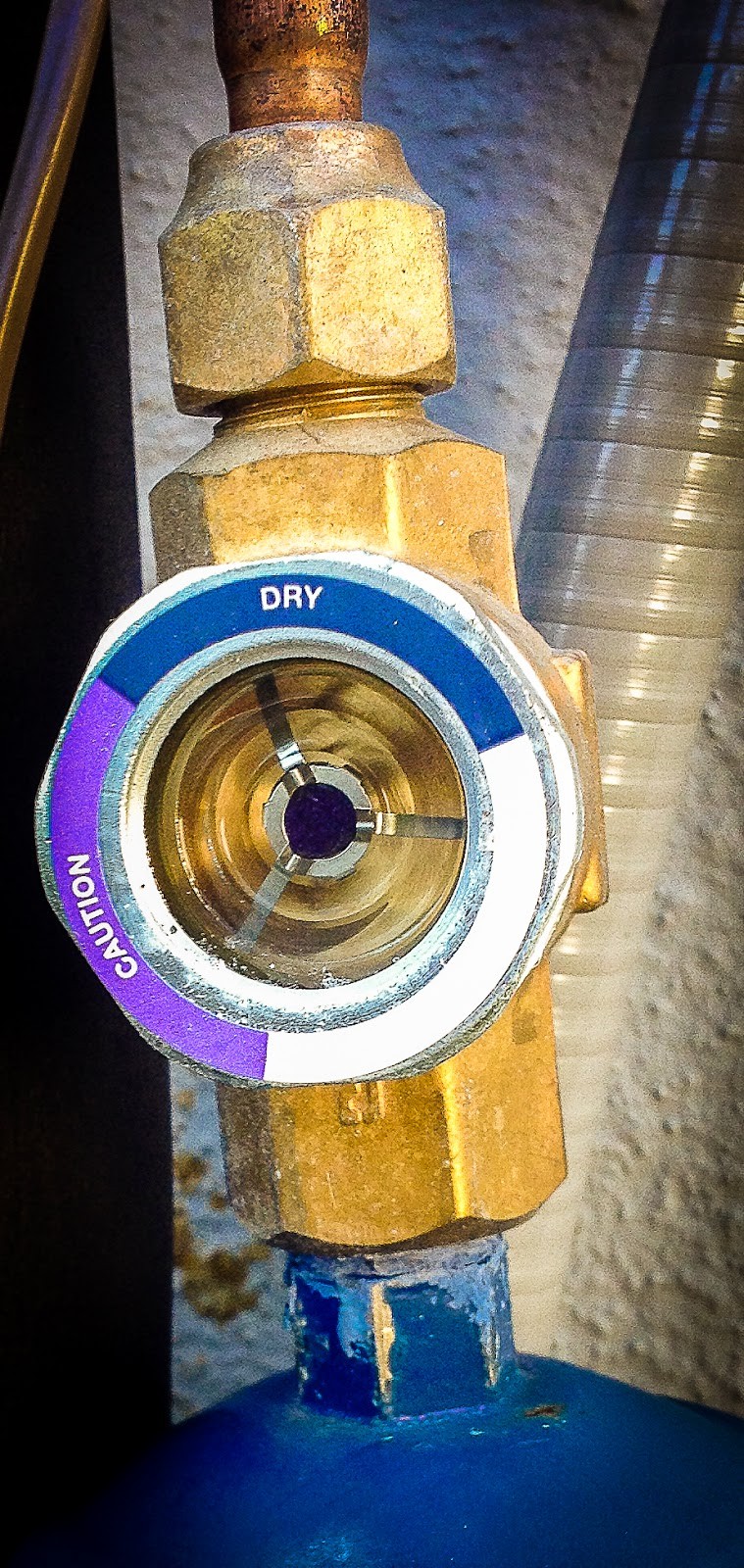
No Bubbles, No Troubles - or is there? This saying is an old adage in our industry to let the technician know that the refrigerant charge is "all set". You see, there must be a steady stream of liquid to the metering device for it to function properly.
For sake of conversation, let's use the TXV. In order for most TXV's to throttle and correctly maintain the desired Superheat, there must be a minimum of 2F of subcooled liquid at the valve (not where it is measured, near the condenser). If the liquid were to flash off ahead of the valve, destruction to the TXV may occur. So, some old timer along the way figured he would look into the sight glass (what we install in residential air-conditioners this day and age are moisture indicators), and determine if there was a steady stream of liquid, or in other words: "No Bubbles, No Troubles!". For years, this method combined with "beer can cold", or "sweating back to the compressor" was used to determine the refrigerant charge was 'close enough'. Those that know me know that I speak from experience here, I have tried them all!
What we were missing was the fact we were overcharging systems, significantly, sometimes to the point of slugging compressors - particularly with fixed orifice systems. Having a steady stream of liquid does not mean the refrigerant charge is correct! I know, I am preaching to the choir here. You see, if you are reading my blog then you care enough to learn how to do things right. I am sure you have picked up an installation manual recently and actually flipped through it, instead of kneeling on it and tossing it into the trash! If you have, you will notice that no where in these books does it read, "No Bubbles, No troubles!" If it were that simple, then they would have put it into the start-up procedure.
Do me a favor: stop wasting energy and killing compressors, okay? Take the extra ten minutes to measure the Superheat & Subcooling on the system, and verify they are within manufacturer specs. Believe me, you will have less warrantied labor work, where you make zero profit replacing compressors!